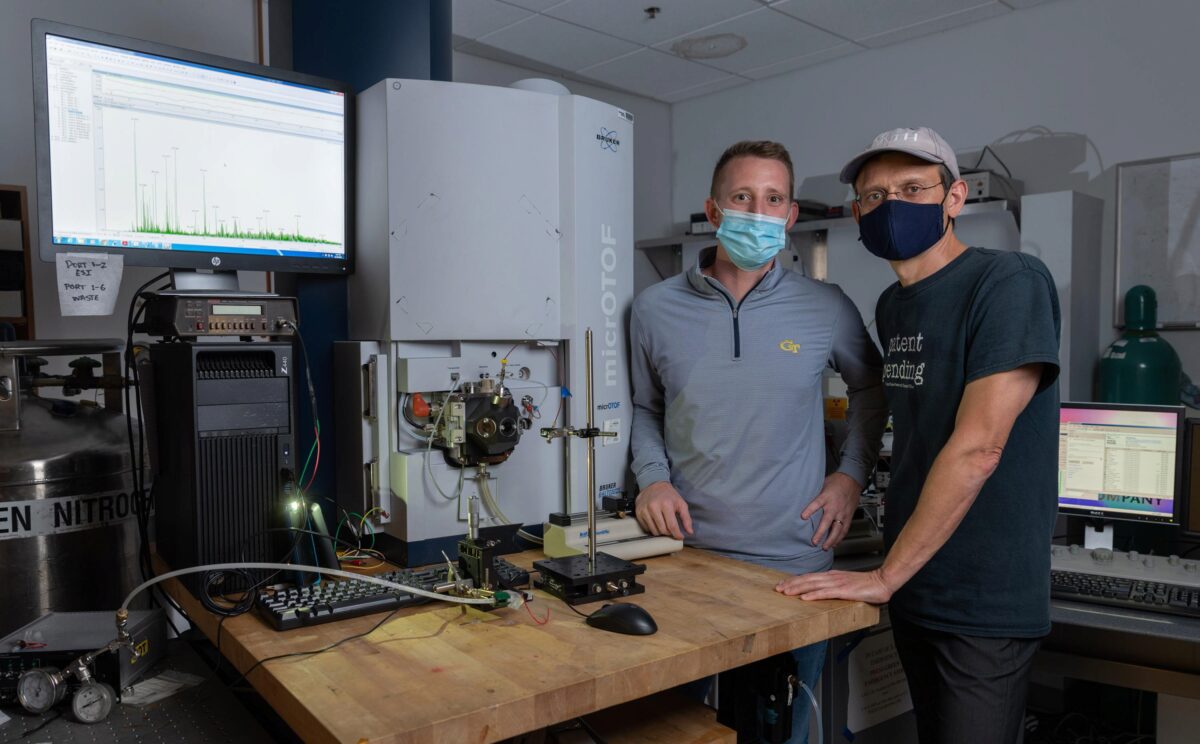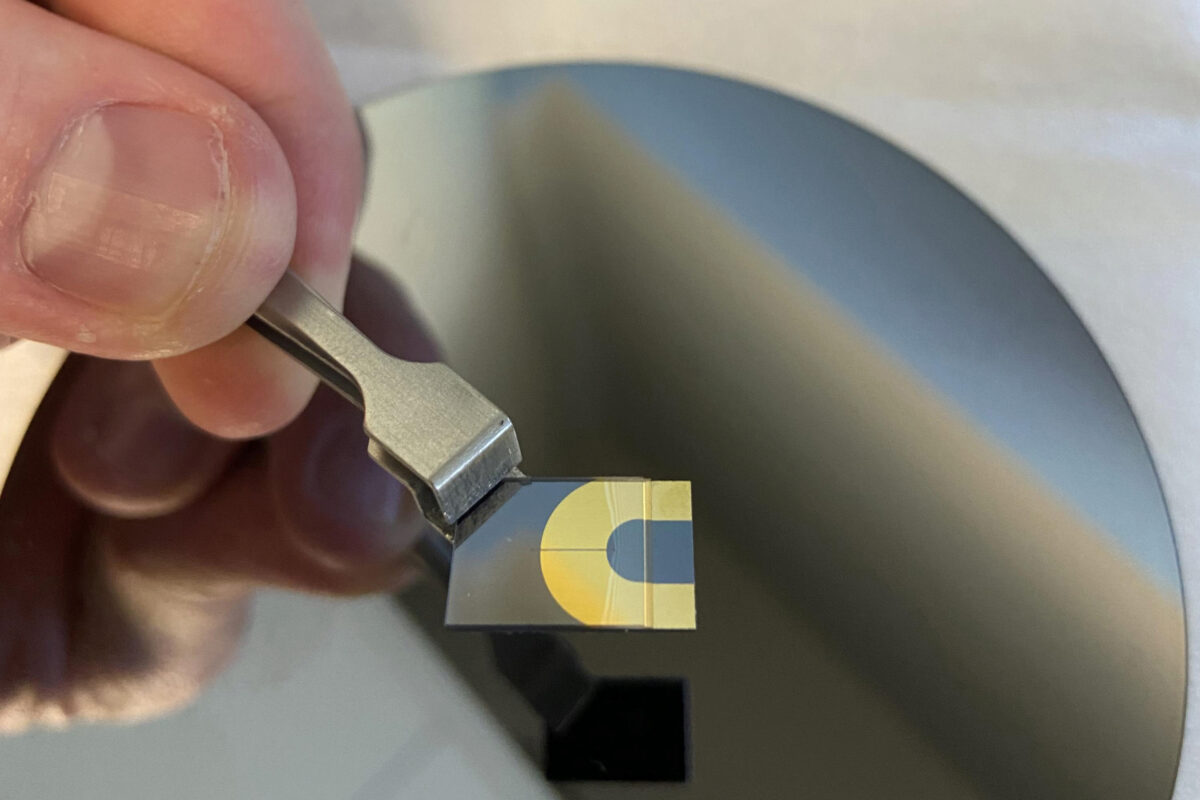Building Better Tools for Biomanufacturing

December 2, 2021 | By Jerry Grillo
A team of researchers from the Georgia Institute of Technology has developed an analytical tool designed to improve the biomanufacturing process of advanced cell-based therapies.
Their Dynamic Sampling Platform provides a real time analysis of cells as they are modified and grown for treatment in a bioreactor, overcoming what currently is a time-consuming, labor-intensive, and expensive process. The team, led by principal investigator Andrei Fedorov, published a recent study about the Platform in Lab on a Chip, a journal of the Royal Society of Chemistry.
The work was supported mainly by two national research centers at Georgia Tech that are focused on developing cell therapy technology – the National Science Foundation Center for Cell Manufacturing Technologies and the Marcus Center for Therapeutic Cell Characterization and Manufacturing.
“There’s a lot of excitement about these cell therapies because they really are remarkable,” said Fedorov, professor in the George W. Woodruff School of Mechanical Engineering and a member of the Petit Institute for Bioengineering and Bioscience at Georgia Tech. “They offer a complete cure. You had a disease, and now you don’t.”
Advanced cell-based therapies currently provide treatment options when all others have run out. They’ve been used to combat different forms of cancer, to reverse the course of genetic diseases, and to restore, maintain, or replace damaged organs.
The research is moving at a fast pace, with hundreds of new cell-based drug applications being currently being considered by the U.S. Food and Drug Administration. And making these drugs is a delicate balancing act.
“The biomanufacturing process requires control of product safety and therapeutic potency,” Fedorov said. “But there is a catch – it is very expensive.”
Fedorov and his team aim to provide insight into cell behavior and the biochemical information needed for process control. The technology they developed may lower the cost of these revolutionary treatments, making them available for a broader population of patients.
The price range for approved cell therapy products is $500,000 to $2 million per treatment, with production driving up the cost.
“You take a few cells that you’ve extracted from a patient or a donor, then modify and grow what is considered enough, right now about a billion cells,” said Fedorov.
After cells are harvested, they undergo numerous steps, including modification in a bioreactor, which typically takes about 14 days – an anxious two weeks for a patient who might be down to one last chance for an effective treatment.
“Often, these treatments are only approved for patients who are near terminally ill,” said Fedorov. “And the problem is, you don’t really know if the cells have maintained their therapeutic potency. You’re almost at the mercy of luck, because the ability to fully monitor a cell’s state as it transitions through the entire process is lacking.”
The absence of suitable process analysis tools is the main bottleneck to mass-market entry for these therapeutics, Fedorov said, contributing to the high cost and representing a significant gap in the biomanufacturing process. So, he and his colleagues have developed a powerful new tool to fill that gap, and it’s about the size of a thumbnail.

Dynamic Sampling Platform
The biomanufacturing of these advanced cell-based therapies depends on the reliable and reproducible growth of cells and that requires vigilant monitoring and analysis of the chemical soup inside the bioreactor, where cells are multiplying.
“The conventional workflow is very manual – there’s a lot of pipetting and centrifuging, and it’s lots and lots of cells, and it takes a long time,” said Austin Culberson, lead author of the study and a Ph.D. student in Fedorov’s lab. “So, we wondered if we could develop the technology to do it quicker.”
They did. The first generation of the Dynamic Sampling Platform focused on analyzing the biomolecules secreted by cells. It was developed in Fedorov’s lab by former Ph.D. student Mason Chilmonczyk, now a postdoctoral researcher in the lab. Chilmonczyk and Fedorov are in the process of commercializing the technology, and they’ve written about their process analytical tool for cell manufacturing in other journals.
Chilmonczyk developed a microfabricated device that processes samples of the media – the broth of vitamins and growth factors where the cells develop. Culberson took the research a step further, creating another small device that performs an intracellular analysis. Now the team has the tools to probe the chemical activity inside of cells, as well as analyzing the surrounding, nutrient-rich broth swimming with cell-secreted biomarkers.
“That combination of information provides a much broader, deeper insight as to what is happening to cells in the bioreactor,” Culberson said.
Fedorov added, “we’re looking for biomarkers, smaller molecules called metabolites. They should tell us the story of how the cell is doing – is this a good cell, is it following the right growth trajectory; is it differentiating into the appropriate type of cell, developing a capability to target disease? And at the end of the process, does it have potency, and can it be administered to a patient?”
Culberson’s micro-sized cell processing device takes in about 100 cells from the bioreactor. The cells pass through channels as thin as human hair, are then captured, rinsed of the broth, then lysed – popped open by electrical pulses.
“After lysis, we spray those biochemicals into a mass spectrometer for analysis,” said Culberson. “Our goal is to have a fully automated platform, so as you’re setting up your biomanufacturing workflow, you would install the Dynamic Sampling Platform. Then you have fully automated, real-time analysis capabilities to guide and track cell growth.”
The idea is to save not only money, but precious time. Currently, reliable real-time analytics to track cell production do not exist, Fedorov indicated, and the result is a suboptimal, low-yield process that relies on diagnostics at the end of production. If a batch of cells is bad, some patients don’t have the time to wait for a production do-over.
“In which case, we’re not talking about million-dollar decisions over a treatment,” Fedorov said. “We’re talking about life and death decisions.”
CITATION: Austin Culberson, Mason Chilmonczyk, Peter Kottke, Annie Bowles-Welch, Delta Ghoshal, Andrei Fedorov. “Sample-to-analysis platform for rapid intracellular mass spectrometry from small numbers of cells.” Lab on a Chip. https://doi.org/10.1039/D1LC00884F
Conflict of Interest: Andrei Fedorov and Mason Chilmonczyk are inventors of the DSP technology and are exploring its commercialization. The terms of this arrangement have been reviewed and approved by Georgia Tech in accordance with its conflict of interest policies.
